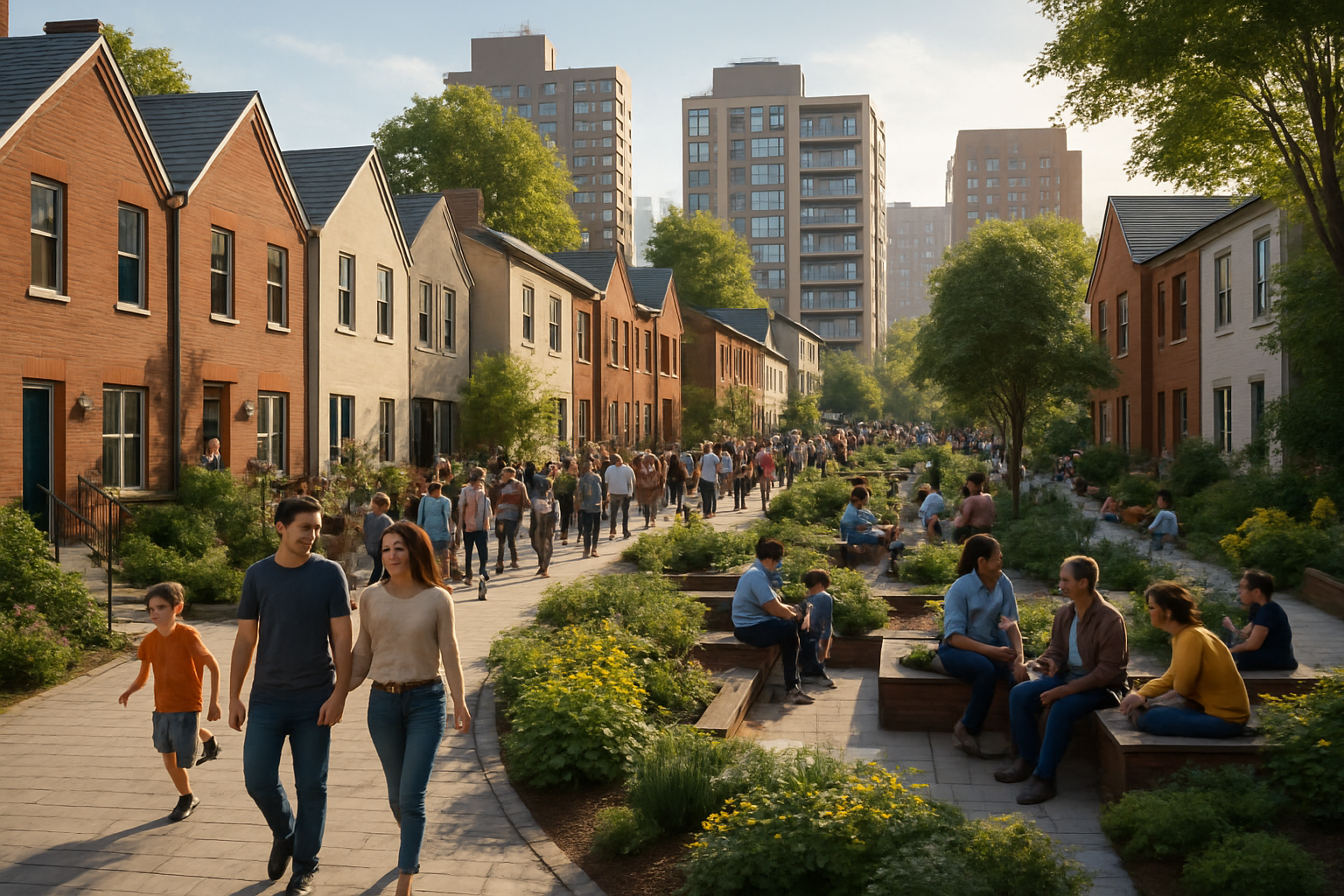The Emergence of Intergenerational Co-Living Spaces
In an era of rapid societal change, a novel approach to communal living is quietly reshaping our urban landscapes. Intergenerational co-living spaces are gaining traction, offering a fresh solution to housing challenges while fostering meaningful connections across age groups. This innovative concept is redefining traditional notions of community and challenging age-segregated living norms. Read below to explore how this trend is transforming social dynamics and addressing pressing societal issues.

Historical Context and Sociological Developments
The roots of intergenerational living can be traced back to traditional extended family structures, where multiple generations cohabitated as a norm. However, the Industrial Revolution and subsequent urbanization led to a shift towards nuclear family units and age-segregated living arrangements. This trend continued throughout the 20th century, with the rise of retirement communities and age-restricted housing further cementing the separation of generations.
In recent decades, sociologists and urban planners have begun to recognize the potential drawbacks of age segregation, including increased loneliness among older adults and a lack of intergenerational understanding. This realization, coupled with changing demographics and evolving social values, has paved the way for the re-emergence of intergenerational living concepts in a modern context.
Current Trends and Cultural Shifts
The rise of intergenerational co-living spaces is being driven by a confluence of societal factors. Demographic shifts, including an aging population and delayed marriage and childbearing among younger generations, have created new housing needs and social dynamics. Additionally, the increasing cost of living in urban areas has made traditional housing options unaffordable for many, prompting a search for alternative living arrangements.
Cultural shifts towards more collaborative and sustainable lifestyles have also contributed to the growing interest in co-living spaces. Millennials and Gen Z, in particular, have shown a preference for experiences over possessions and a desire for more community-oriented living. At the same time, many older adults are seeking ways to remain active, engaged, and connected as they age.
Design and Implementation of Intergenerational Co-Living Spaces
Successful intergenerational co-living spaces are carefully designed to facilitate interaction while respecting individual privacy and needs. These spaces typically feature a mix of private living quarters and shared common areas, such as kitchens, lounges, and outdoor spaces. The layout and amenities are intentionally crafted to encourage spontaneous encounters and foster a sense of community.
Architects and designers are incorporating universal design principles to ensure that these spaces are accessible and comfortable for residents of all ages and abilities. This might include features like wider doorways, adjustable countertops, and smart home technologies that can adapt to changing needs over time.
Social Implications and Benefits
Research has shown that intergenerational living can have numerous positive impacts on both individuals and communities. For older adults, these arrangements can provide opportunities for social engagement, reduce feelings of isolation, and even improve physical health outcomes. Younger residents, in turn, can benefit from the wisdom and life experiences of their older neighbors, as well as potentially find mentorship and support.
From a societal perspective, intergenerational co-living spaces have the potential to address multiple challenges simultaneously. They can help alleviate housing shortages, reduce the strain on social services by promoting mutual support networks, and contribute to more age-diverse and inclusive communities.
Challenges and Considerations
While the concept of intergenerational co-living holds great promise, it is not without its challenges. Successfully integrating diverse age groups requires careful planning, clear communication, and a willingness to bridge generational gaps. Issues such as noise levels, lifestyle differences, and varying expectations around privacy and communal living must be addressed proactively.
Additionally, there are legal and financial considerations to navigate, including zoning laws, property management structures, and ensuring affordability for residents across different income levels. Developing sustainable models that can be scaled and replicated in various contexts remains an ongoing challenge for proponents of intergenerational co-living.
The Future of Intergenerational Co-Living
As our societies continue to grapple with issues of housing affordability, social isolation, and demographic change, intergenerational co-living spaces are likely to play an increasingly important role in shaping our communities. The success of early adopters and pilot projects is inspiring further innovation and investment in this area.
Looking ahead, we can expect to see a diversification of intergenerational living models, from purpose-built developments to adaptive reuse of existing structures. Technology is likely to play a growing role in facilitating connections and managing shared spaces, while policy makers may need to reconsider zoning and housing regulations to accommodate these new living arrangements.
The emergence of intergenerational co-living spaces represents a hopeful and innovative response to some of our most pressing societal challenges. By bringing generations together in thoughtfully designed environments, we have the opportunity to create more connected, resilient, and inclusive communities for the future.




